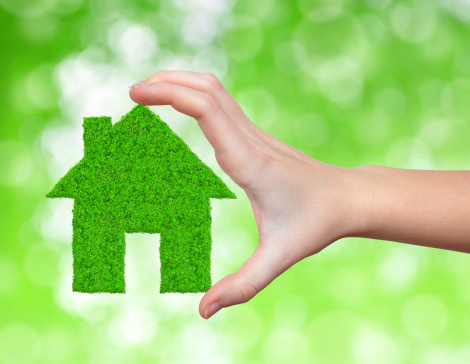
Green building practices and LEED certification help conserve natural resources.
The “green” movement is more than a catchphrase; it’s a way of life for many architects and engineers, and helps contribute to more sustainable building practices that benefit everyone. You’ll need your share of LEED and green-friendly PDH to keep your licensing current. And as the movement grows, more topics are likely to arise.
PDH Academy offers numerous courses on a wide range of topics that meet your continuing education requirements. Here are 4 that deal specifically with LEED certifications specifically, and green practices in general:

LEED certified building require regular renewals.
LEED for Existing Buildings: Recertification Guidance (2013)
The very nature of LEED for Existing Buildings means it’s a process that lasts for the life of the building. LEED certification is renewed every few years, so the recertification process happens again and again. This course instructs on the recertification of buildings that are already LEED certified.
Learning Objectives:
- The establishment and performance periods for existing buildings seeing LEED certification.
- Tracking and documenting building performance information as required for recertification.
- Requirements for LEED recertification credit compliance and performance.
- Differences and similarities between new and old LEED for Existing Buildings.
LEED New Construction Application for Multi-Building Campuses
Multi-building sites, such as colleges or government properties, may have one owner or several. This course clarifies the application of the LEED Green Building Rating System V2.1 and 2.2 for New Construction and Major Renovations in multi-building situations.
Learning Objectives:
- LEED-NC and its use as a performance standard in a multi-building setting.
- Applying the correct certification approach, of three, depending on the project.
- Commercial LEED-NC Green Building Rating System credits and prerequisites.
- The application of credits and prerequisites to multi-building projects.

New construction LEED certification starts a building off on the right foot.
Energy Performance of LEED for New Construction Buildings
After years with growing numbers of LEED certifications, there’s more information available for studying the effects of energy efficiency. This course studies 121 LEED New Construction (NC) buildings for the purpose of comparison to the Commercial Building Energy Consumption Survey averages, Energy Star ratings, and LEED submittal energy performance estimates from 2008.
Learning Objectives:
- Measuring and evaluating energy performance of sample buildings.
- Energy savings objectives and whether LEED certified buildings are meeting them.
- Comparing the accuracy of sample buildings to individual buildings.
- Strengths and weaknesses of current LEED and energy modeling standards.
Green building and Leadership in Energy & Environmental Design (LEED) certification standards continue to evolve as more is learned about the discipline. Qualification isn’t automatic – buildings must meet prerequisites and keep meeting them to maintain current certification.
The situation is similar for professional development hours. To keep your licensing and membership status current, you need continuing education. PDH Academy can help with that throughout your career.
Check out our courses to learn more about the LEED and green building PDH training that you need.



